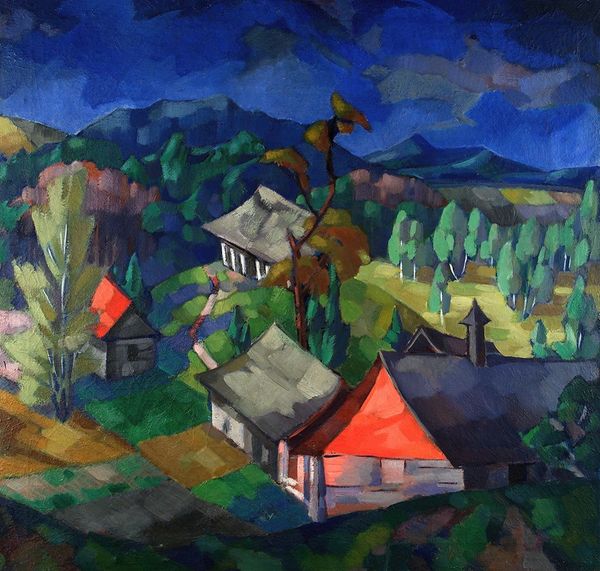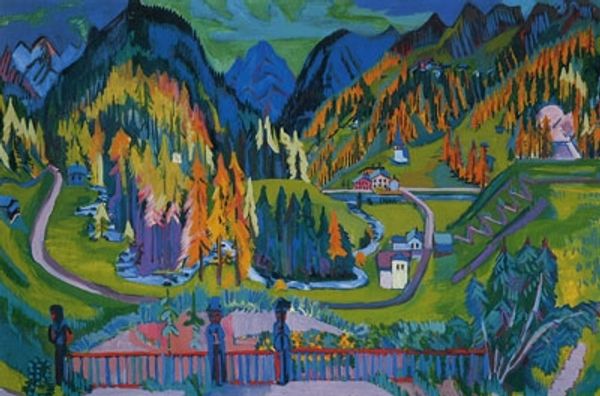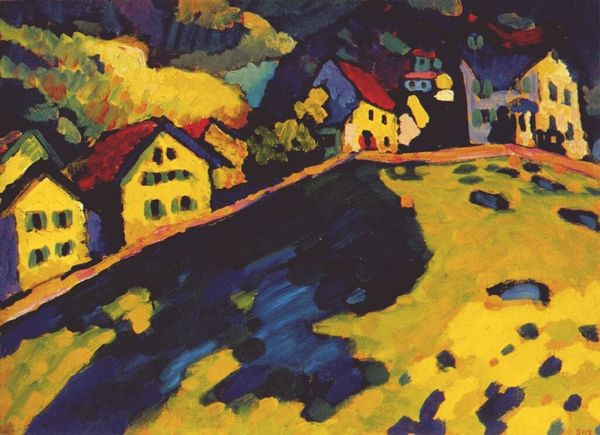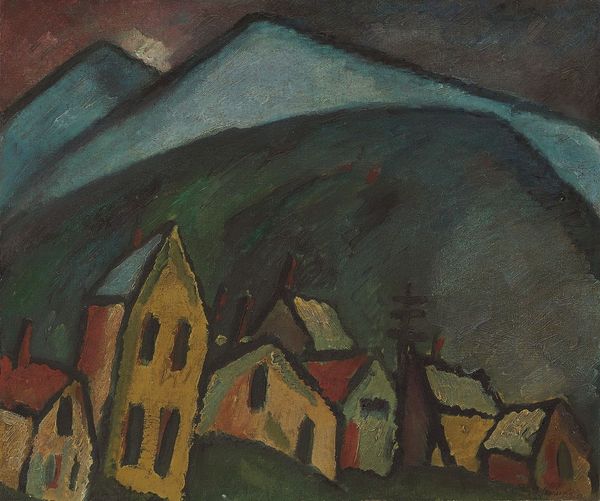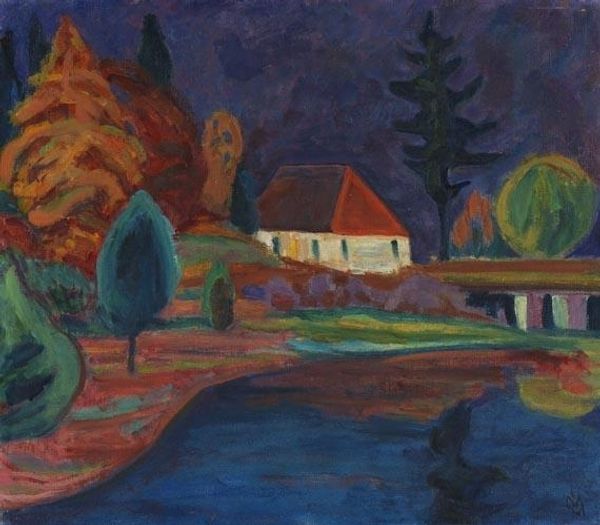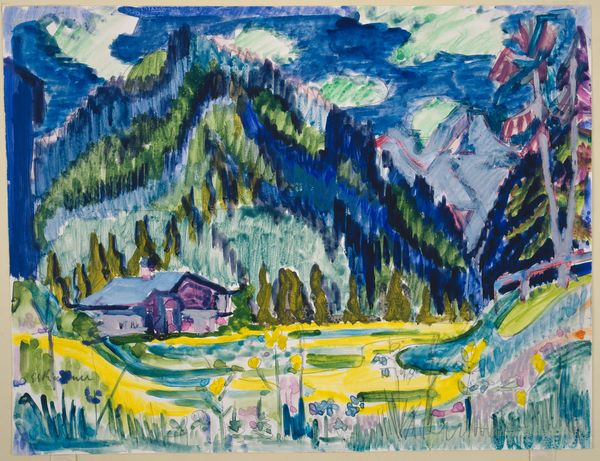
Copyright: Public Domain: Artvee
Curator: Ernst Ludwig Kirchner's "Haus auf der Staffel," painted in 1918, is an excellent example of German Expressionism's mature phase. Editor: It's almost jarring—that bright red building practically vibrates against the cool blues and greens of the landscape. It definitely grabs your attention, almost assaulting the eyes. Curator: Kirchner, grappling with PTSD after his military service in WWI, sought refuge in the Swiss Alps. This painting reveals the influence of his time in Davos, where the landscape offered a respite from the psychological turmoil of the war. The intense colors reflect a deep, unresolved anxiety. Editor: Looking at the paint application itself, the way he's layered these hues, I see a tension between representation and pure color. Notice the raw materiality of the oil paint. There’s a roughness, an honesty about the texture that mirrors the unvarnished reality of the post-war era. The paint isn't trying to hide itself; it is declarative. Curator: Precisely. That declaration speaks to a broader artistic rejection of pre-war social and artistic norms. This wasn't simply about representing a house; it was about expressing a raw, interior state of being. Considering Kirchner's history of substance abuse, the choice of rendering the alpine scene through intense colours reflects inner turmoil. It could also be viewed in relation to the period’s crisis in masculinity, as male subjectivity in modern painting underwent redefinition through its negotiation of psychological trauma. Editor: Yes, and even the structure itself, the house, seems almost precariously perched. The tilted perspective enhances this sense of unease, of instability, both architectural and psychological. I'm wondering what kinds of locally sourced pigments he might have incorporated. I'm always interested in seeing how artists integrate the resources they have at hand. Curator: This wasn’t simply an aesthetic exercise, though; for Kirchner, engaging with nature, with manual labour, even farming, was part of a restorative process, of rebuilding a self fractured by the trauma of war and addiction. These vibrant, sometimes clashing, colours speak of an urgent need for change. Editor: An attempt at healing through making, a real tangible encounter between body, environment, and materials, an artwork born from social disruption and the artist's engagement with making under duress. Fascinating. Curator: Indeed, "Haus auf der Staffel" provides us not only with a glimpse into Kirchner’s personal struggle, but also insight into the broader socio-political disruptions that characterized early 20th-century Europe. Editor: Yes, considering materials and historical context is key to really seeing art and culture, the labour that creates culture in general.
Comments
No comments
Be the first to comment and join the conversation on the ultimate creative platform.



